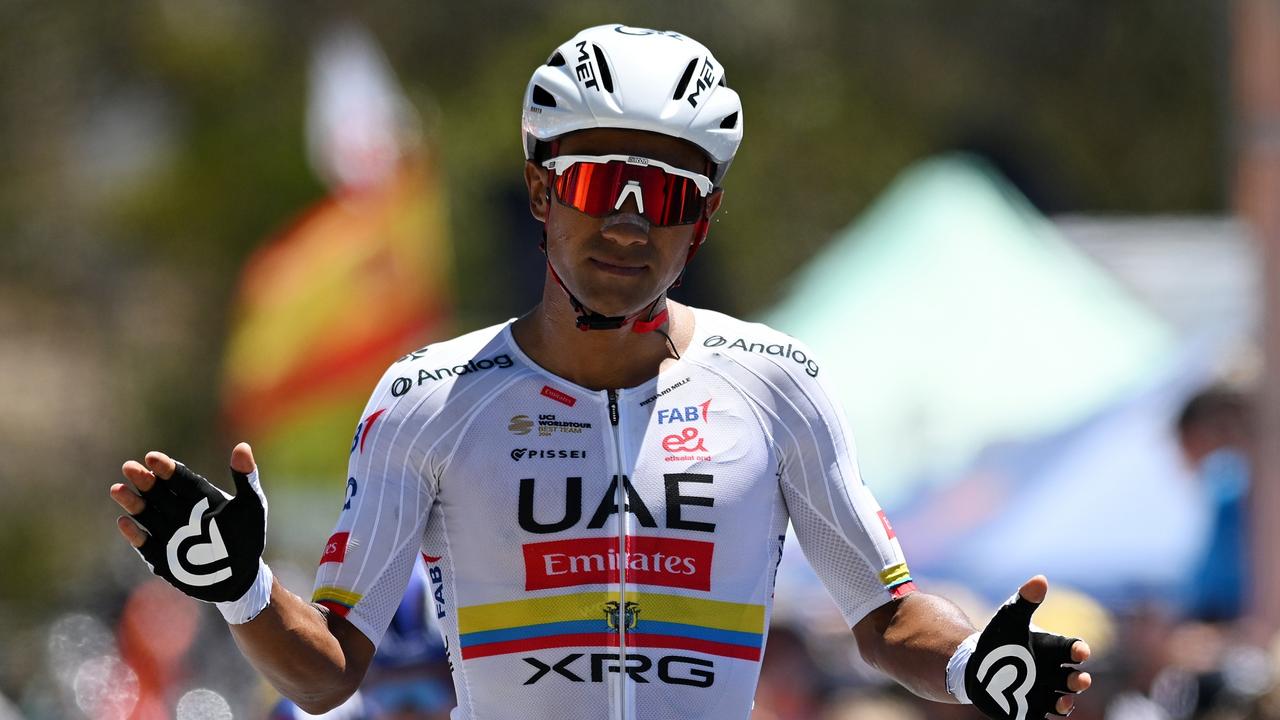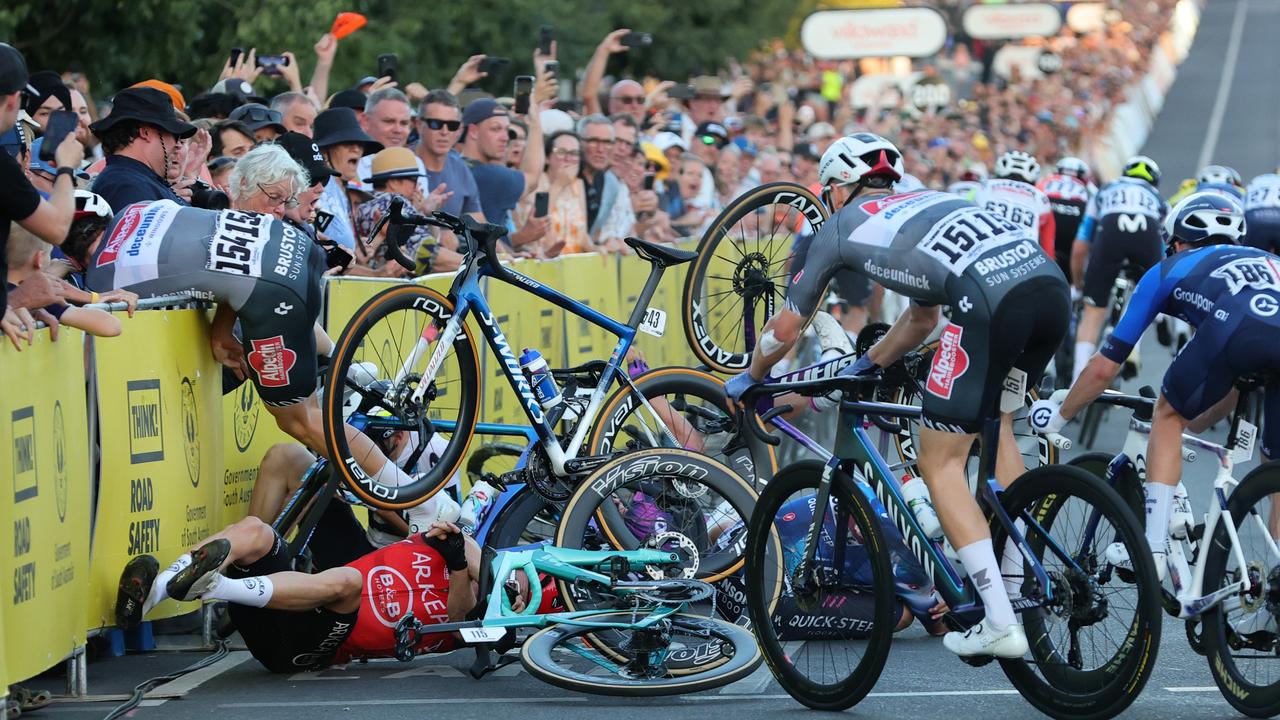Tour Down Under 2016: How elite is the world of elite cycling? Reece Homfray finds out the hard way
OLD Willunga Hill will make or break this year’s Tour Down Under champions. Reporter Reece Homfray finds out how tough the climb really is.
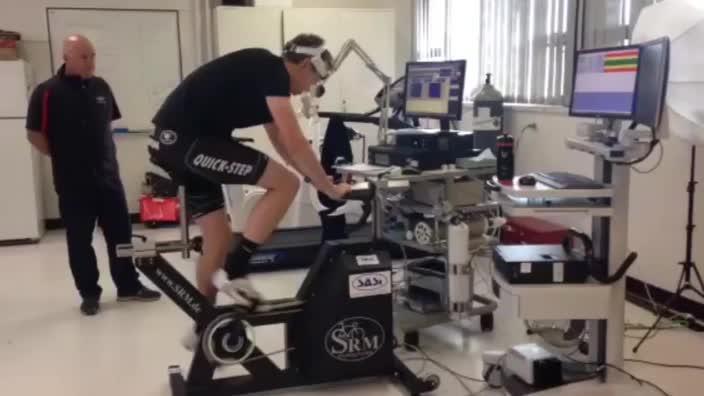
Tour Down Under
Don't miss out on the headlines from Tour Down Under. Followed categories will be added to My News.
- Tour Down Under 2016: More coverage of the TDU here
- People’s Choice Classic preview
Get the official Tour Down Under program in Saturday’s Advertiser
IT’S about halfway up Old Willunga Hill that my jaw starts to ache.
Lactic acid – well, that’s what I think it is – begins snaking its way from my legs and up my body like a poison. My quads are burning and standing up on the pedals brings no relief.
My wrists are stiff, my shoulders are heavy, my nose is running and my sunglasses are fogging up.
Then there’s that dry taste in my mouth that accompanies a head cold in winter.
I’m fidgeting on the bike, looking down at my feet and then up at the road, back at my feet, now the road, but there are so many twists and turns you never know when it’s going to end.
Riding up Old Willunga Hill can be quite enjoyable – but riding up as hard and fast as you can is not.
GET READY TO RACE: Official Santos TDU program in The Advertiser on Saturday
If Tasmanian Richie Porte felt anything like I did on the 2.9km climb in Adelaide’s southern wine region, where he’s won the Tour Down Under’s most decisive stage for the past two years, then you’ve got to wonder what motivates these guys to make a career out of it.
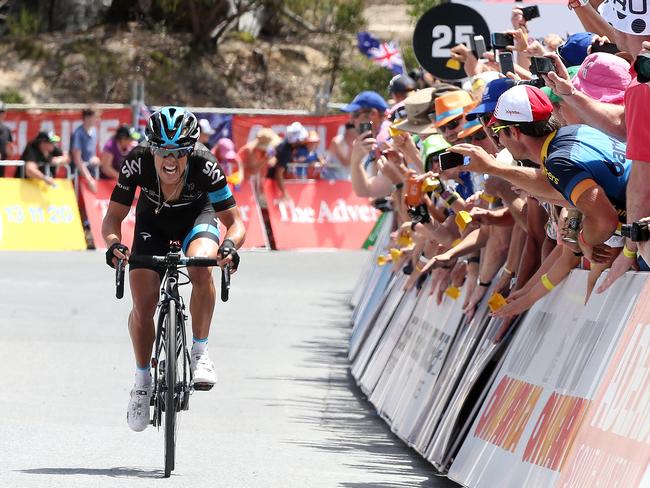
When Porte unleashed his signature attack up Old Willunga Hill, the power metre attached to his bike topped 420 watts.
He didn’t hold that power output the whole way up, but in that last gruelling kilometre it would have been something close. That’s enough to power your espresso machine, fire up your hedge trimmer or make a smoothie in your kitchen blender.
But Porte doesn’t need a computer to tell him how he should be feeling when he and his rivals are gasping for air. It’s pretty clear from the grimace on his face that he knows what sort of power is surging from his body and through his pedals, driving his chain and turning his wheels.
When Porte hits the Willunga climb during the Tour Down Under he has been riding for three hours.
His heartrate elevates to around 180bpm, his jersey becomes drenched with sweat and his legs bead with veins. Porte at that very moment is a snapshot of what the elite of cycling looks like.
But just how elite is elite when it comes to the peloton that captivates Adelaide every January for the Tour Down Under? That’s the answer we’ve gone in search of as the best cyclists in the world again converge on the city for the first race of the WorldTour season.
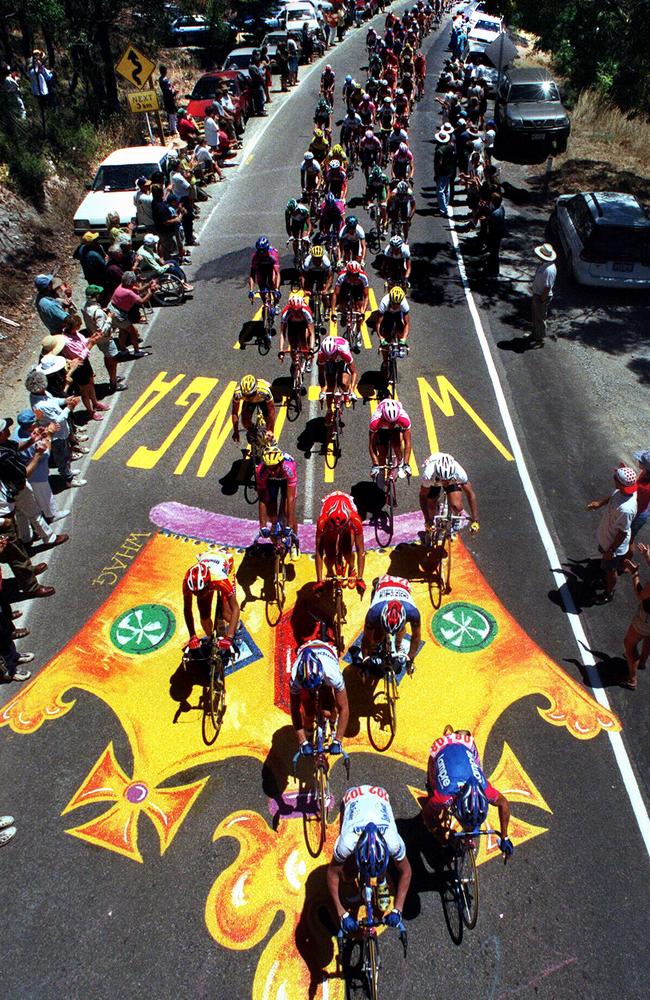
What does the average cyclist with average fitness look like compared to the pros? And what does holding 400-odd watts on a bike for six minutes actually feel like?
I can tell you what 320 watts for four minutes feels like – and it’s not pleasant.
Nor is riding full gas up Old Willunga Hill, which is not quite 3km long but to the average punter might as well be Alpe d’Huez.
WHAT sarted out as a relatively simple request from SA WEEKEND that I test my own cycling health and write about it landed me in a meeting room with the doctor at the South Australian Sports Institute.
SASI, as it is better known, has become a production factory for world and Olympic cycling champions from Mike Turtur, Brett Aitken and Stuart O’Grady in the 1980s and ’90s to Annette Edmondson, Jack Bobridge and Rohan Dennis as recently as last year.
“It’s a four-minute test,” the doctor says then, pausing, adds: “Do you know what you’re getting yourself into? Have you got a heart condition? Are you feeling fit and healthy?”
Medical clearance just to set foot in the lab was the first indication that what I was in for wasn’t as easy as it sounded.
The test requires you to ride at maximum effort on a stationary bike set at a certain resistance for four minutes.
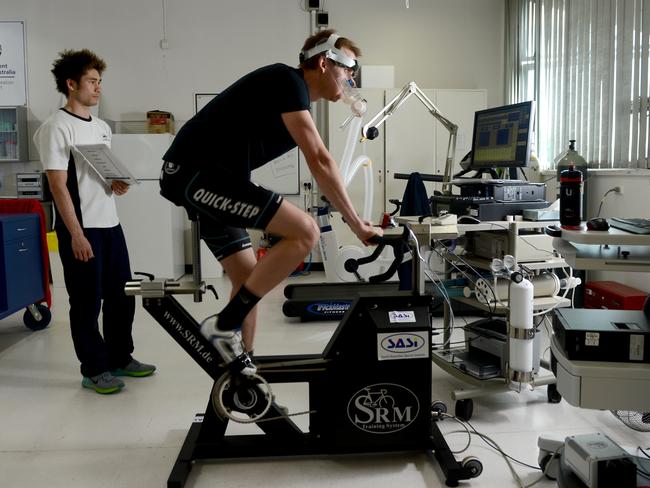
From that and other testing, physiologists can measure your VO2 max (the maximal rate at which your cardiovascular system can transport oxygen from the air to your muscles); your wattage (the average power produced by pedalling the bike); lactate level (level of lactate in your blood, which is an indication of effort); and skinfolds (an indication of body fat).
Four minutes sounded easy but it’s not.
The night before the test, I turned to Twitter asking for advice from those who had been there before.
Olympic silver medallist Glenn O’Shea offered:
@reecehomfray start fast get faster finish fast
— glenn o'shea (@glennoshea1) August 26, 2015
That was pretty straightforward.
Former world champion Kate Bates:
@reecehomfray don't have dairy for breakfast, easier to hurl up ;)
— Katherine Bates (@KatherineLBates) August 26, 2015
Was she joking with that smiley face?
Top Australian cyclist Tiffany Cromwell
I spotted a worrying theme emerging.
And then this from Tour de France rider Zak Dempster:
“Quit your job, move states, change continent if necessary, start a new life.”
Gulp.
It’s no surprise that the cyclists sipping full-cream lattes and eating croissants at the cafe aren’t the professionals who have to front for skinfold tests with their teams.
Seven measurements taken from my tricep, bicep, abdomen, thigh and calf gave me a grand total of 81.7mm, which meant nothing to me until I was told that typically the skinfolds of an elite male cyclist would be somewhere between 35-40mm. So I’m more than double.
Then it was time to get on the bike, warm up and let rip for four minutes, but I was counting in seconds and all 240 of them. What I wasn’t ready for was the mouthpiece and noseclip which force you to breathe entirely through a snorkel-like hose wedged between my teeth.
With SASI coach and Olympic gold medallist Brett Aitken urging me on, the four minutes unfolded like this:
1st minuteI try to find a rhythm, get my breathing right and get used to how uncomfortable it was already feeling.
2nd minute I realise that this is going to be a long four minutes – and that the resistance is harder than I thought.
3rd minuteMy legs feel like they are burning and I can’t slow my breathing. I hope I don’t pass out.
4th minute I’m almost hyperventilating. I just hang on to the handlebars, stop rocking from side to side and fight the irresistible urge to rip my nose clip off so I can get more air. Then finally it’s over.

“What’s his lactate?” Aitken asks physiologist Jamie Stanley who takes blood from my finger.
“21,” Stanley replies.
“That’s high – we know you were working hard,” Aitken tells me.
Well that’s a relief. At least they know I wasn’t pretending. And my maximum heart rate of 181 confirmed it.
But then for the not-so-good news.
My VO2 max, relative to body weight, was 48.9ml/kg/min.
Australian Tour de France winner Cadel Evans measured a VO2 max of 86ml/kg/min. He was 21 when he stunned AIS sports scientists with this figure and it remains one of the highest ever set in Canberra.
A senior Olympic or WorldTour cyclist has a VO2 max of 75-85ml/kg/min, sometimes higher, and a junior 65-75.
Reigning Tour de France champion Chris Froome last month published his testing data, which showed a VO2 max of 84.6 while American Tour winner Greg LeMond was said to have a VO2 max of 92.5.
Then came my four-minute mean maximal power result, which was an average of 320 watts.
This was nowhere near what Porte can hold for double that time on a climb, or the 1500 watts Mark Cavendish momentarily hits in a sprint finish.
Froome’s lab testing showed his peak power was 525 watts and his sustained power (for 20-40 minutes) was 419 watts.
But I did however manage to beat one of SASI’s talent ID athletes who they’d tested earlier that day – by one whole watt.
That athlete happened to be a 16-year-old girl and although I’m a 30-year-old guy, as they say, you can only beat who they put in front of you and an inch might as well be a mile.
LAB sting is one thing. Putting it into practice on the open roads is another. And where better to measure yourself than the iconic climb up Old Willunga Hill.
I had two cracks at it – eight weeks apart – to measure any improvement from a tailored training program.
It actually took me three goes because the first time turned out to be a false start when I was barely out of the main street and snapped my chain. Too much power, I told myself.
A week later with my bike back together I returned.
What is a not-so-pleasant surprise is that you’ve got a steady climb through the Willunga township just to get to the start of the hill.
The hill itself is a mix of green and golden brown and the view is quite nice if you’re standing on the side of the road with a cold drink.
But if you’ve decided to ride up it as swiftly as you possibly can, then the view to your left could be Niagara Falls and you still wouldn’t enjoy it.
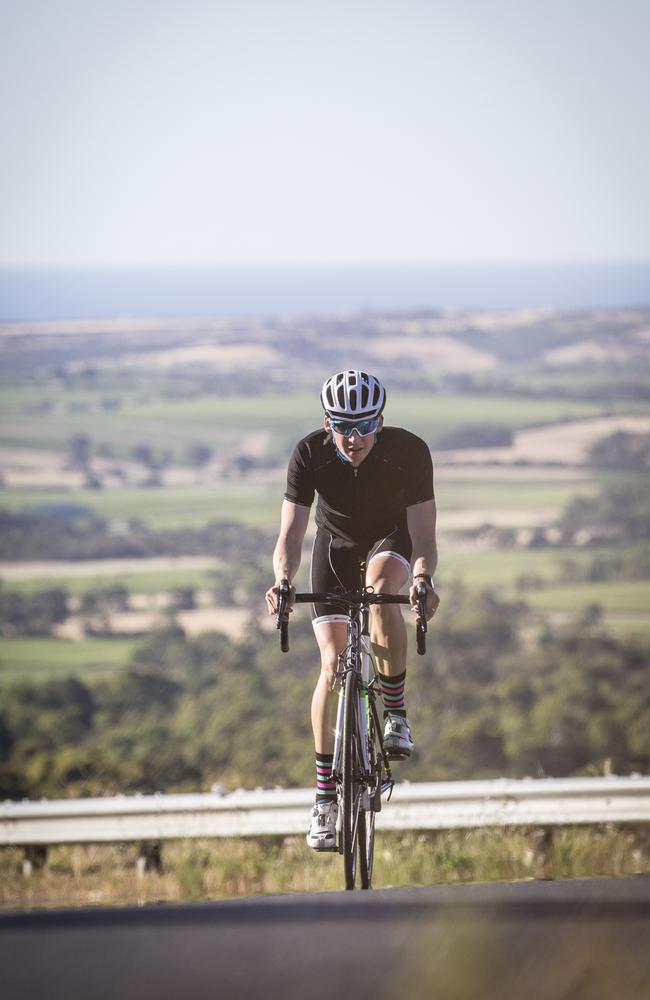
Instead, it’s a case of get comfortable with feeling uncomfortable on the road, which goes up at an average gradient of 7.4 per cent.
I don’t know whether the climb is extra sharp at the beginning or if it’s my body going into a state of shock because my heart quickly jumped up by 30 beats per minute.
Eight minutes in, I was still giving it everything, my legs were screaming and that’s when the pain started working its way up my body.
As the finish gets closer, the word “Cadel”, painted on the road, appears – a reminder that the BMC star was here only last year –but there’s no relief until you see a giant golden crown and the words “Willunga Hill” sketched out across the bitumen.
That’s where Orica-GreenEDGE team rider Simon Gerrans usually attacks if he’s still in the race, but in the past two years no one has been able to catch Porte.
“I went (attacked) from further out in 2014. It’s a hard climb, but this year the good thing was that BMC and Astana split it at the bottom and it caught me out,” Porte says.
“By the time we got back to them they were pretty tired, which helped.
“Being in January it’s hot, but it’s such a cool buzz riding up there with all the supporters on the roadside.”
THE first time I tackled Old Willunga Hill there was no one else there driving the pace and there certainly weren’t any fans on the side of the road as I stopped the clock at 12min 15sec.
Not quite the 6min 39sec Porte did in 2015 or the 7min 23sec set by Jack Haig, who now rides for Orica-GreenEDGE, but enough to give me the 1090th-fastest time according to Strava – the unofficial record keeper for cycling routes all over the world.
SASI looked at my results and advised on a two-month training program. It included a mixture of efforts in the hills and faster stuff on the flat and complemented a program I was following in the build-up to my first half Ironman – a menu of strength and speed workouts and long rides.
I also adjusted my diet, which saw me shed 5kg in three months – a period that included the two months between the rides.
Thinner and fitter, I returned to the scene for a final crack.
It was now summer and 30C and you could feel the heat rising from the road.
I had barely climbed 500m when that awful, familiar feeling came flooding back.
I contemplated backing right off, but knowing it was being recorded on Strava and later written about forced me to keep going at my limit.
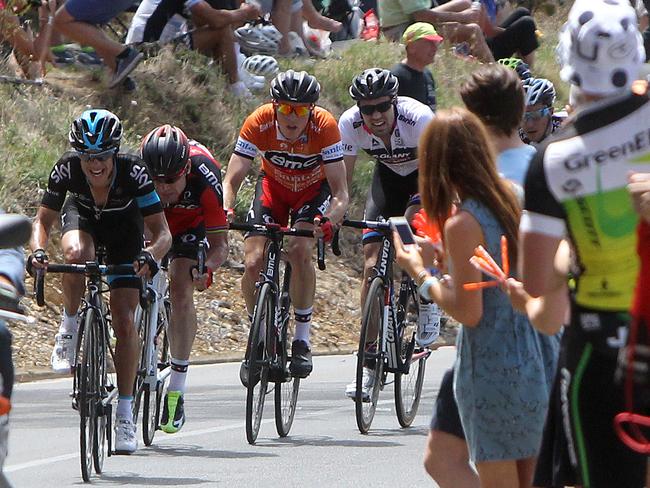
My breathing was fast and heavy, and once I got to the top those deep breaths turned into coughing, but it was over.
The time... 11min 33sec at just over 16km/h.
I can’t even fathom how fit guys like Porte are able to ride up at 26km/h.
In two months I had managed to take 42 seconds off my best time, but I can’t see myself ever going sub-10 minutes, let alone under seven.
What it has done is put into perspective how good the top cyclists in the world are.
And it’s confirmation that it takes a mix of genetics, years of training and perhaps, most importantly, the mental strength to push through pain that others simply can’t or won’t endure in order to get there.
Find your copy of the official Tour Down Under program in The Advertiser on Saturday.

